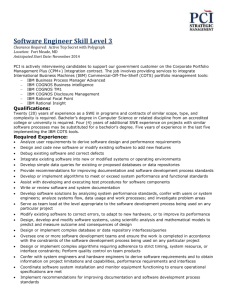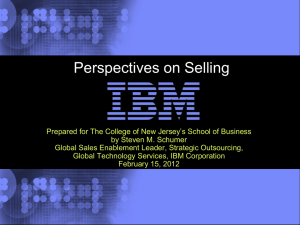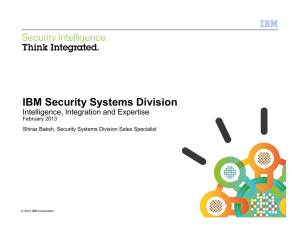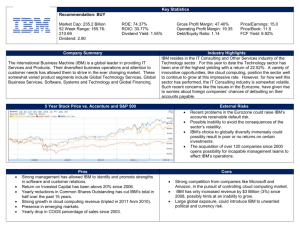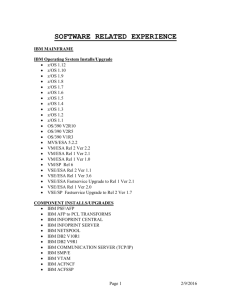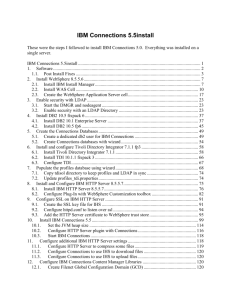Meeting Notes - OneStart
advertisement
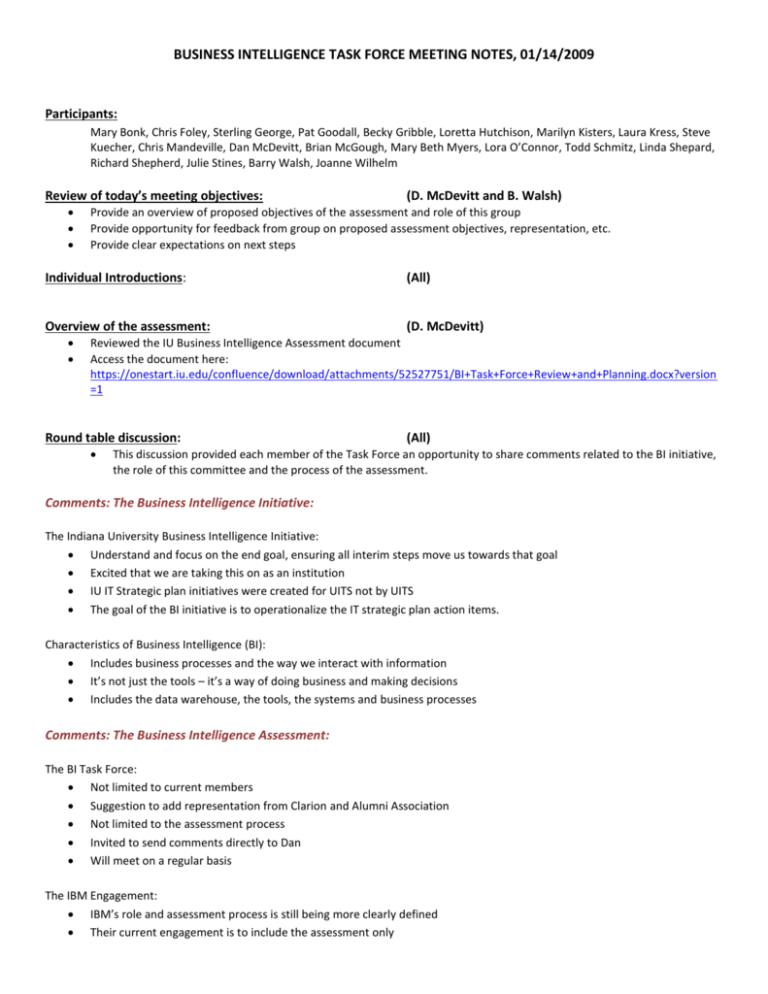
BUSINESS INTELLIGENCE TASK FORCE MEETING NOTES, 01/14/2009 Participants: Mary Bonk, Chris Foley, Sterling George, Pat Goodall, Becky Gribble, Loretta Hutchison, Marilyn Kisters, Laura Kress, Steve Kuecher, Chris Mandeville, Dan McDevitt, Brian McGough, Mary Beth Myers, Lora O’Connor, Todd Schmitz, Linda Shepard, Richard Shepherd, Julie Stines, Barry Walsh, Joanne Wilhelm Review of today’s meeting objectives: (D. McDevitt and B. Walsh) Provide an overview of proposed objectives of the assessment and role of this group Provide opportunity for feedback from group on proposed assessment objectives, representation, etc. Provide clear expectations on next steps Individual Introductions: (All) Overview of the assessment: (D. McDevitt) Reviewed the IU Business Intelligence Assessment document Access the document here: https://onestart.iu.edu/confluence/download/attachments/52527751/BI+Task+Force+Review+and+Planning.docx?version =1 Round table discussion: (All) This discussion provided each member of the Task Force an opportunity to share comments related to the BI initiative, the role of this committee and the process of the assessment. Comments: The Business Intelligence Initiative: The Indiana University Business Intelligence Initiative: Understand and focus on the end goal, ensuring all interim steps move us towards that goal Excited that we are taking this on as an institution IU IT Strategic plan initiatives were created for UITS not by UITS The goal of the BI initiative is to operationalize the IT strategic plan action items. Characteristics of Business Intelligence (BI): Includes business processes and the way we interact with information It’s not just the tools – it’s a way of doing business and making decisions Includes the data warehouse, the tools, the systems and business processes Comments: The Business Intelligence Assessment: The BI Task Force: Not limited to current members Suggestion to add representation from Clarion and Alumni Association Not limited to the assessment process Invited to send comments directly to Dan Will meet on a regular basis The IBM Engagement: IBM’s role and assessment process is still being more clearly defined Their current engagement is to include the assessment only There were ideas how we might support IBM (and perhaps reduce their level of effort) by utilizing internal resources, groups & initiatives Our mandate is to obtain an objective assessment from IBM with input from the BI Task Force Concern that differences in terminology across functional areas will extend the amount of time IBM will need The assessment process: Who analyzes the assessment – IBM does the initial analysis and makes recommendations IBM offers recommendations – it is up to us what actions to take Provide everyone involved in the assessment with feedback on the results at the end of the process Information which could be collected by the task force and forwarded to IBM: Document current state by functional area – data, tools, processes, history Information on shadow systems, to identify gaps Identify representatives to contact for assessment How to approach the assessment process: Must include executive decision-maker perspective Don’t approach in silos – include individuals who use data across functional areas Include Academic Dean’s offices and other offices where data from many sources is used Encourage interviewees to think about what they need to do their jobs ; what information they need Challenge will be to encourage interviewees to think out of the box Avoid focusing on operational reporting – we’ve done well supporting that – may be improvements Primary focus is on management & executive level reporting & Business Intelligence Review of shadow systems could demonstrate what is missing from the current environment Other comments & questions: Is the BI initiative timeline bound to the Kuali implementation timeline – no Much education is needed; Paradigm change, culture change, cannot be ignored Realize the BI initiatives represent a change in behavior Identified need for a comprehensive communication plan Are there universities to use as benchmarks? EDSS plans to conduct virtual visits of other institutions known for their excellence in BI Do we assume that remodeling of data will be required – yes Comments: Areas of Concern and Ideas for Success Resource concerns: Difficult to do what we need to do given resource and time constraints; it comes down to resources Brian McGough indicates we should assume the resources will be available Investment in IBM assessment demonstrates priority and commitment to resources Action items in IU IT strategic plan clearly support the initiative Long-term cost savings in maximizing use of our IT information assets We are being asked to expend significant resources without an understanding of how the BI initiative will be funded Issues related to scope: There are so many components to the objectives for this task force The BI Task Force cannot do it all We must have a clearly defined scope Many persons will need to be involved Importance of how we set expectations: Beware of setting expectations too high Whole thing won’t happen overnight Be careful to not suppress innovative thinking Think out of the box Think big – dream big – don’t let the resource issue keep us from identifying the ideal Suggestions for success: Implement in phases Find some smaller, short term deliverables, while pursuing larger objective Have clearly defined objectives Identify key executive sponsorship Build broad institutional support Next steps for the BI Task Force: Start the process of identifying constituents to participate in the assessment, i.e., interviewees Action items for the BI Task Force Project Team: Determine timing of next meeting along with recurring meetings Negotiate assessment with IBM Invite IBM to next task force meeting Create a glossary of BI-related terms and provide other resources to the Task Force Ask IBM for similar assessments in a higher education environment; contact schools Develop a method to capture who to involve in the assessment Develop a communications plan Identify institutions as potential benchmarks Distribute meeting notes


